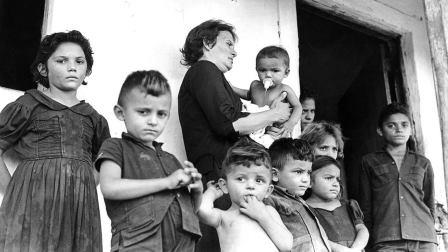Goat Marked for Death
Goat Marked for Death” is a semi-documentary narrative of the life of João Pedro Teixeira, a peasant leader from Paraíba, assassinated in 1962. After 40% of the technical script had been filmed, the 1964 military coup forced the film crew to to stop filming. Part of the team was imprisoned on charges of “communism”, and the rest dispersed to different cities in Pernambuco. The title "Goat Marked for Death" is inspired by the poem "João Boa-Morte, goat marked for death" by the poet Ferreira Gullar, who also participates as a narrator.
At first it was intended as a fictional film with characters played by non-professional actors. The script was structured around characters with clearly defined profiles, constant, without internal conflicts, repetitive in their thoughts and attitudes. That is to say, typified characters and intellectualized and ideological dialogues, distanced from peasant culture. The first filmed material was saved from censorship thanks to the fact that it had been sent, before the 1964 coup, to a developing laboratory in Rio de Janeiro, which, in turn, sent a copy to the film crew.
In the available film material it can be seen that the points of view assumed by the camera change throughout the shots, the point of view on the roof follows the gaze of power; the point of view at ground level accompanies the perspective of the oppressed; the lateral point of view, when the narrative instance stops assuming the perspective of the characters on stage, becomes an extra-diegetic narrator.
The framings are very diversified: general shot, close-up, medium shot, American shot, etc. Real time coincides with diegetic time, and there is a similarity in the treatment received by time and space, which suggests that the technical script had been designed following the canons of post-war Italian neorealism, with the same didactic profile. -awareness.
